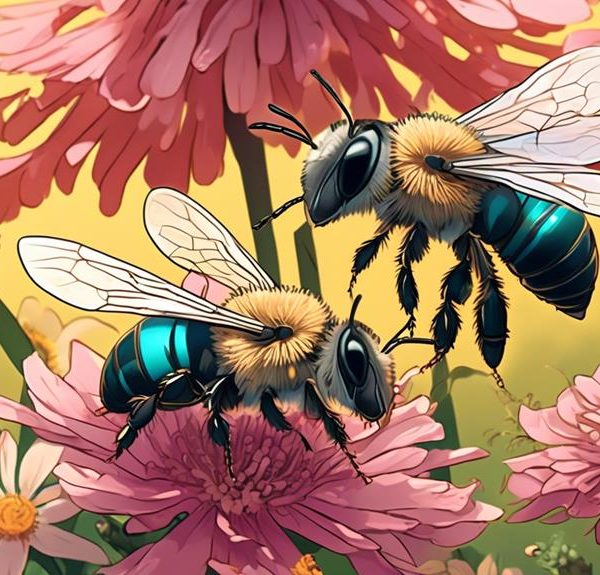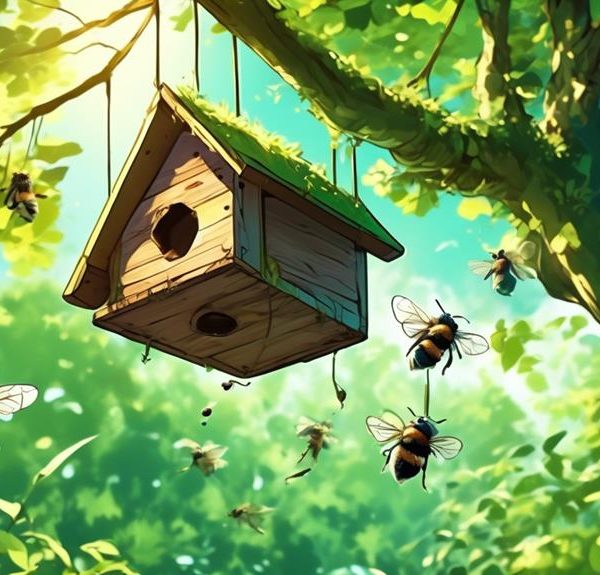Keeping mason bees? Discover the surprising distances these industrious pollinators travel in search of food and its ecological implications.
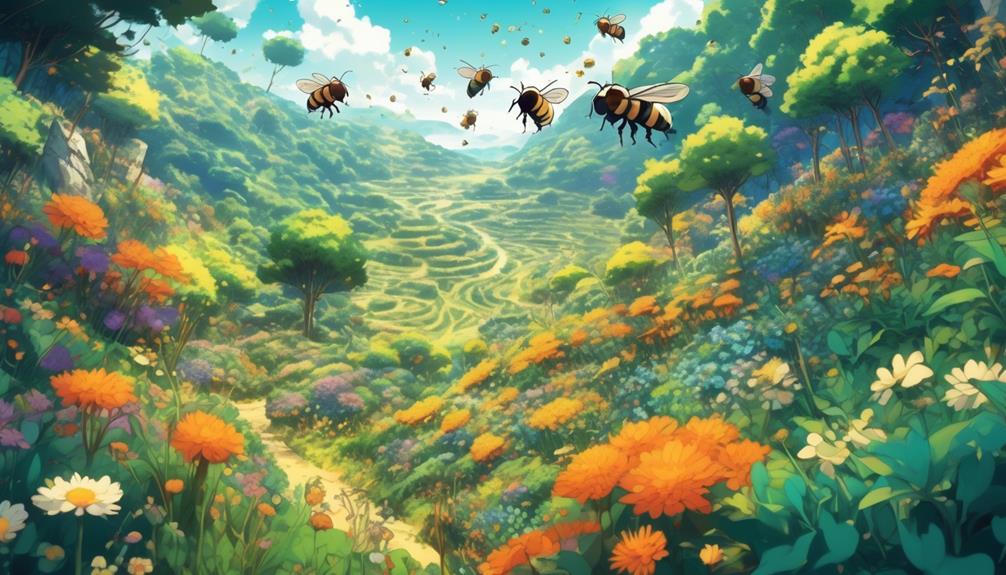
How Far Do Mason Bees Forage?
You might not be aware that mason bees, despite their small size, are capable of flying significant distances in search of food sources. As one of the most industrious pollinators, understanding the foraging behavior of mason bees is crucial to both amateur gardeners and professional entomologists alike.
Factors such as food availability, habitat quality, and even weather conditions can impact how far these bees venture from their nests. But how exactly do these factors influence a mason bee's foraging distance? And what implications does this have for our ecosystems?
As we peel back the layers of this intriguing topic, you'll be left questioning what you thought you knew about these hardworking insects.
Key Takeaways
- Mason Bees are efficient pollinators, surpassing honeybees in pollination skills.
- Foraging behavior of Mason Bees is influenced by the local availability of resources and their preference for certain plant species.
- Factors such as food availability, seasonal variations, physical condition, and landscape structure impact the foraging distance of Mason Bees.
- Mason Bees' extensive foraging radius enhances plant biodiversity and ecosystem resilience, but also exposes them to risks such as pesticides and pollutants.
Understanding Mason Bees
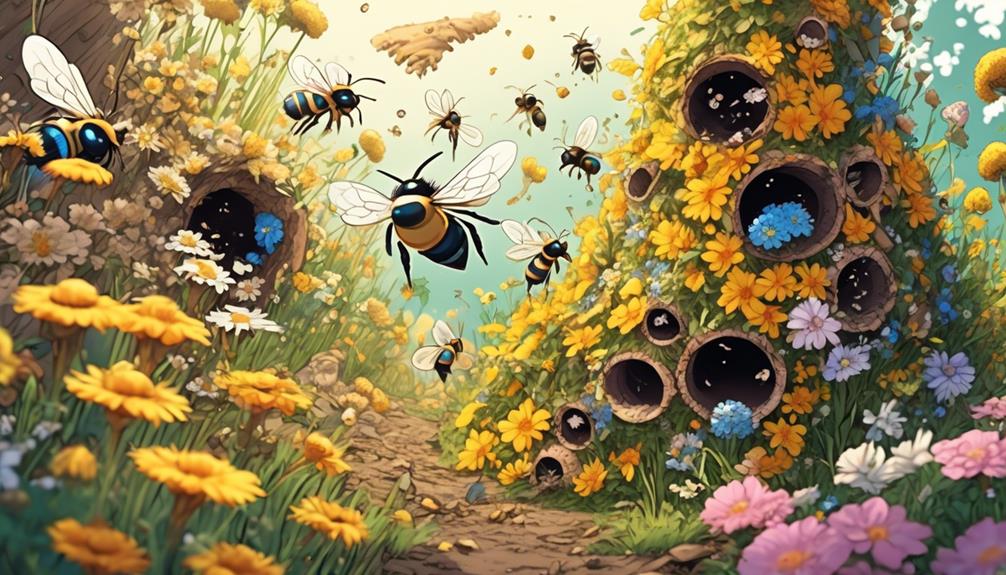
To delve into the realm of Mason Bees, it's crucial to grasp their biology, behavior, and ecological significance in pollination.
These solitary bees, scientifically known as Osmia, are renowned for their efficient pollination skills, often surpassing their honeybee counterparts.
You'll find that Mason Bees have a unique biology. Unlike social bees, they don't live in colonies. Instead, each female bee independently constructs and provisions her own nest. She's a self-reliant creature, an architect of her destiny.
Their behavior is equally fascinating. Mason Bees are known for their docility, making them a favorite among both novice and experienced beekeepers. They're industrious too – a single Mason Bee can pollinate the same amount as 100 honeybees.
Their ecological importance can't be overstated. Mason Bees are crucial to our ecosystem as key pollinators. They're nature's little helpers, ensuring the continuity of plant species, and by extension, maintaining biodiversity.
Understanding Mason Bees is the first step to appreciating their value in our ecosystem. It's also instrumental in devising conservation strategies to protect these hardworking, solitary pollinators. The more you know about Mason Bees, the more you'll grow to respect their critical role in our environment.
Foraging Behavior of Mason Bees
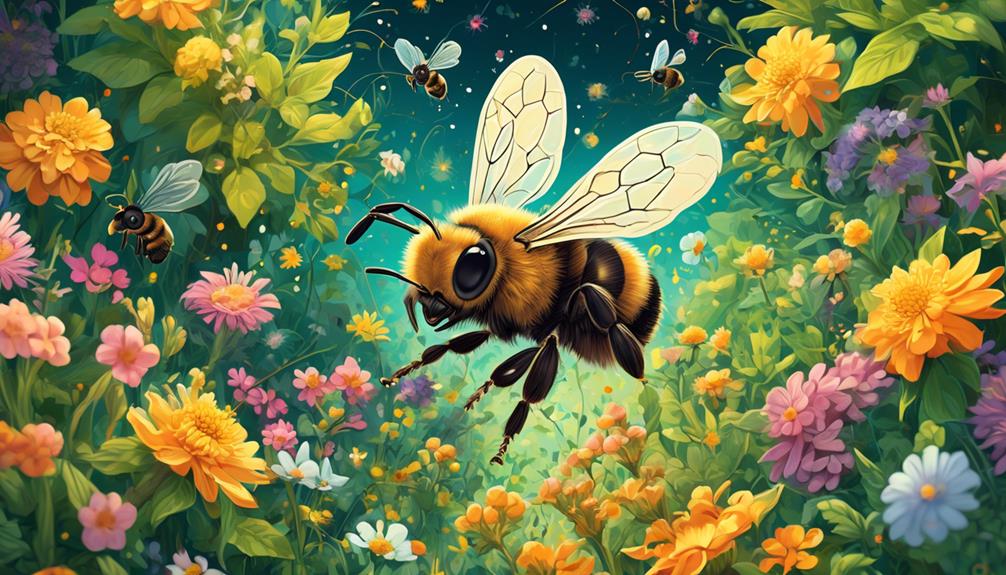
Delving into the foraging behavior of Mason Bees, you'll find their strategies to be highly efficient and specialized, reflecting their solitary nature and strong adaptability. Unlike honeybees that communicate and cooperate within a colony, Mason Bees locate and collect pollen and nectar independently.
Their foraging activity is largely influenced by the local availability of resources. These bees are polylectic, meaning they collect pollen from a wide range of flowering plants. Nevertheless, they exhibit a preference for certain plant species over others, which can influence their foraging routes and distances.
To give you a clearer understanding, let's consider the following table:
Foraging Behavior | Description |
|---|---|
Polylectism | Collects pollen from various plant species |
Solitary Foraging | Locates and collects resources independently |
Resource-based Activity | Influenced by local availability of food sources |
Plant Preference | Prefers certain plant species, influencing foraging routes |
From this perspective, you can see that the foraging behavior of Mason Bees is a complex interplay of environmental factors and innate preferences. It's a testament to their adaptability and resilience, key traits that allow them to thrive in a rapidly changing world.
Factors Influencing Foraging Distance
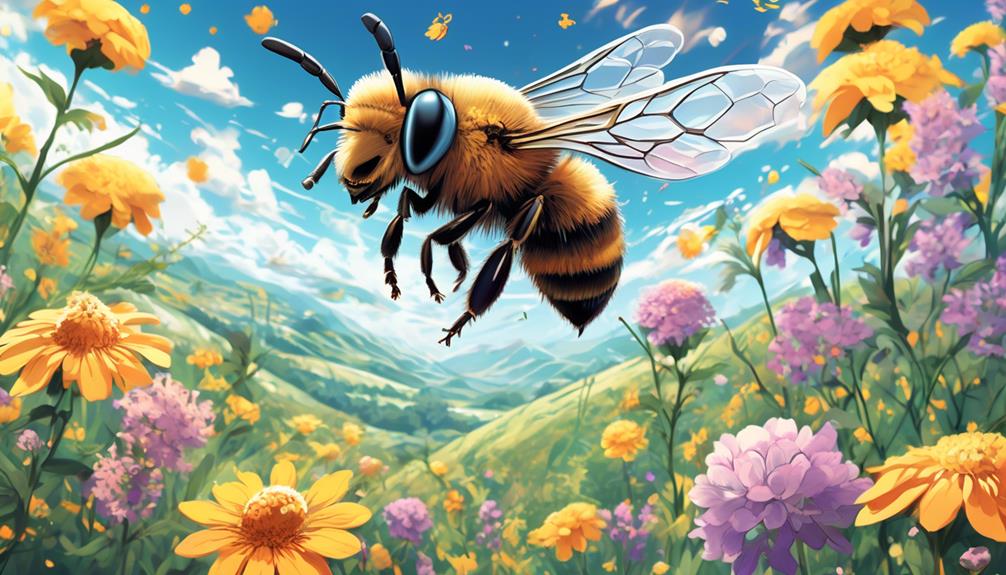
While understanding the intricacies of Mason Bees' foraging behavior is essential, it's equally important to consider the factors that influence how far these bees travel in search of food. Notably, food availability plays a critical role. When nectar and pollen sources are plentiful and close to their nests, Mason Bees don't venture far.
Further, seasonal variations affect foraging distances. During spring, when floral resources are abundant, bees may not need to travel long distances. However, in lean seasons, they're compelled to forage farther. Similarly, environmental conditions such as temperature, wind speed, and precipitation can directly impact their foraging range.
The physical condition of the bees also matters. Healthy, strong bees can go the extra mile, literally. But weakened or sick bees may not have the same stamina to forage far.
Lastly, the landscape structure, including the presence of barriers like bodies of water or tall buildings, can limit their foraging distance.
In essence, foraging distance in Mason Bees is dynamic and governed by a complex interplay of biotic and abiotic factors. Understanding these can help you better appreciate the vital role these bees play in our ecosystems.
Implications for Ecosystems
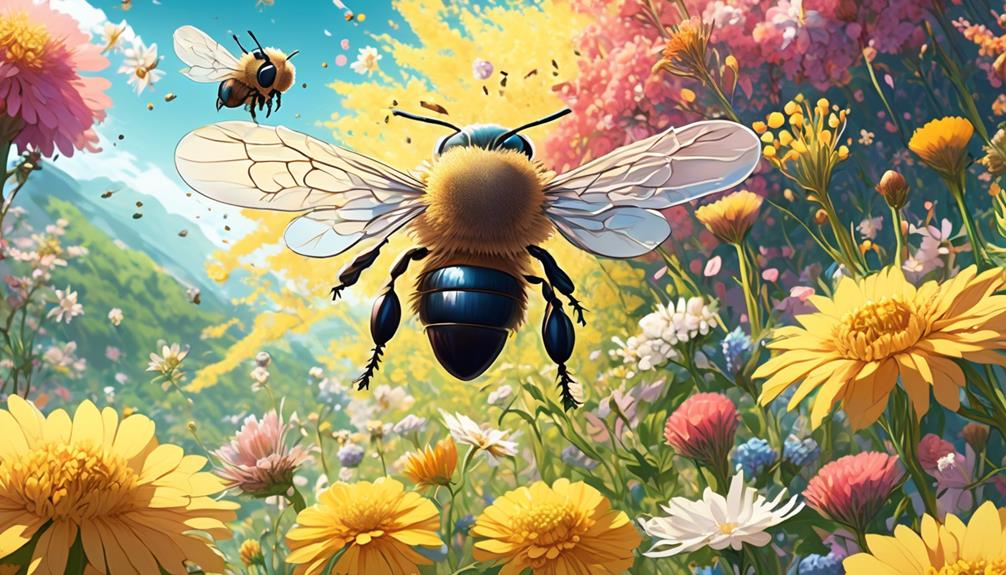
Unraveling the implications of Mason Bees' foraging distances, you'll quickly see how these bees significantly influence our ecosystems. Their extensive foraging radius contributes to increased pollination over larger areas, enhancing plant biodiversity and ecosystem resilience. Remember, Mason Bees are solitary pollinators, thus they're not restricted to returning to a centralized hive. This mobility permits them to pollinate a broader range of plants, including wildflowers that often get overlooked by social bees.
Their foraging behavior has profound implications for conservation efforts. Given their ability to disperse pollen over greater distances, they can help restore damaged ecosystems by fostering plant reproduction in areas where other pollinators mightn't reach. This is particularly impactful in regions where human activity or climate change has disrupted traditional pollination patterns.
However, their larger foraging areas also pose challenges. Mason Bees' broad-ranging travels mean they're more exposed to pesticides and other environmental pollutants, which can significantly impact their health and survival rates. As such, understanding and addressing these risks becomes crucial in our efforts to protect and leverage these diligent pollinators for ecosystem health and resilience.
Insights Into Mason Bees' Habits
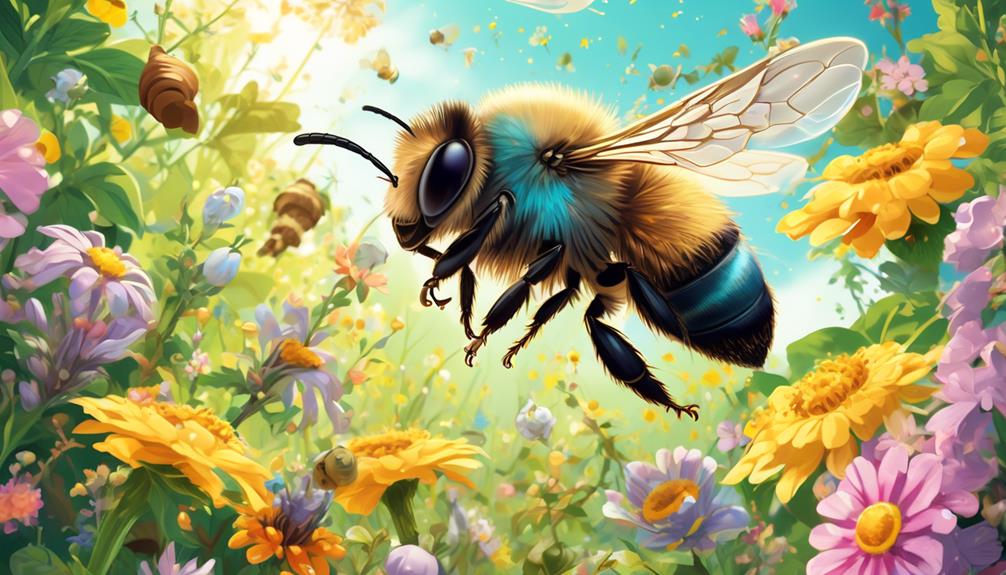
To gain a deeper understanding of Mason Bees' behaviors, it's essential to examine their unique habits, including their nesting patterns, food preferences, and daily activity schedules.
Unlike honeybees, Mason Bees are solitary, preferring to nest in small cavities such as hollow stems or pre-existing holes in wood. They're expert builders, using mud to create individual cells for their offspring.
You'll often find them foraging for nectar and pollen within a few hundred meters of their nest. They're generalists, meaning they don't have a specific preference for certain plant types. This ability to adapt to various food sources aids their survival in diverse habitats.
Mason Bees are also diurnal. Their daily activity begins at sunrise and ends at sunset. During peak foraging periods, they can visit up to 75 flowers per hour. Interestingly, weather conditions significantly impact their activities. On colder days, they may delay their foraging until temperatures rise.
These habits provide insights into their foraging behaviors, including the distances they cover, the plants they visit, and the times they're most active. By understanding these factors, you'll gain a deeper appreciation of these amazing pollinators and their vital role in our ecosystems.
Conclusion
In conclusion, you've discovered that mason bees' foraging distance is influenced by various factors, often spanning up to 300 meters. Their foraging behavior significantly impacts ecosystems, indicating their crucial role in biodiversity.
Understanding these intricate habits offers profound insights into their world, underscoring the need to protect and encourage their habitats. So, the next time you see a mason bee, remember its vital role in maintaining our environment.

